Autumn is the season of berries, and while we traditionally seek out exotic species such as Pyracantha, holly and Viburnum to quench our cravings for this gorgeous eye-candy, we tend to overlook our home-grown lovelies. Yet nothing beats our native berries when it comes to colour. Decked out in shiny jewel-like fruits, our small trees, shrubs and vines display rich reds, bright yellows, oranges, milky creams, violets, blues, and translucent moon-stone whites.
Now is the time to head into the bush (or the natives section of your botanic gardens) to scout them out, identify them, and put in your order with a nursery to ensure you’re not depriving yourself of their stunning display next season. When purchasing, just remember that it’s the female plants that sport the goodies!
Our favourites
Coprosma robusta (karamu) has vibrant neon-orange berries as long as your small fingernail. In a good year, the branches of this glossy-leafed shrub are literally weighed down with fruit. While this coprosma enjoys coastal settings (providing the ground is not too dry), it is highly adaptable and can be found growing almost anywhere. Give it a little shade if you can, although it often performs spectacularly on the margins of forest and, of course, in your garden!
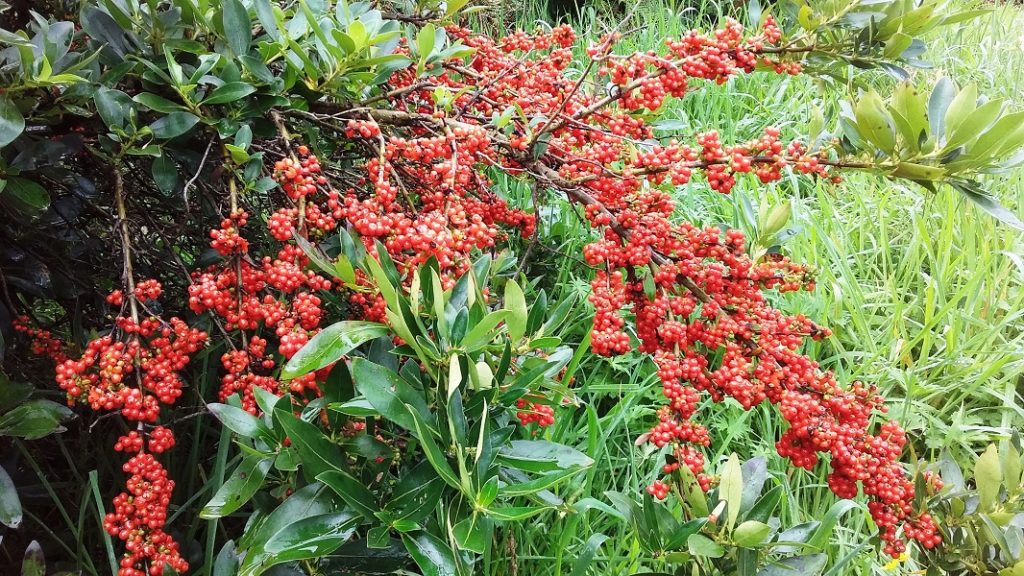
On a sunny day, the violet-blue berries of Coprosma propinqua glint like precious jewels. What adds to their attraction is that they are scattered throughout the densely packed branches of the wiry shrub so that they appear as tiny Christmas decorations lighting up the plants small-leafed foliage. The berries change over time from a translucent white to purple. In a high fruiting year, they stand out for their striking and unusual colour.
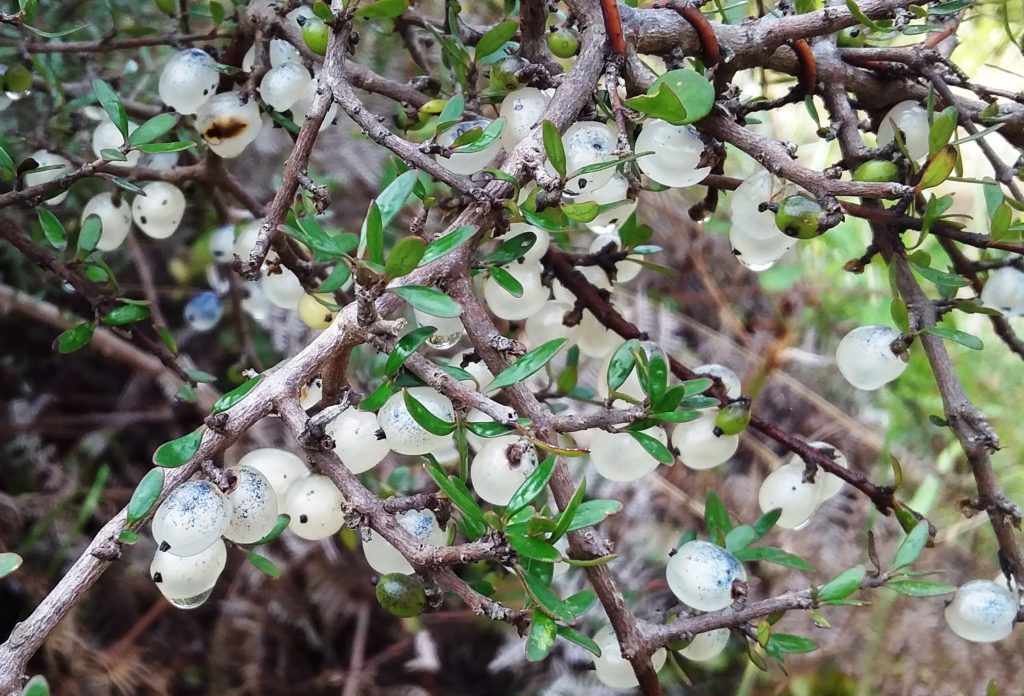
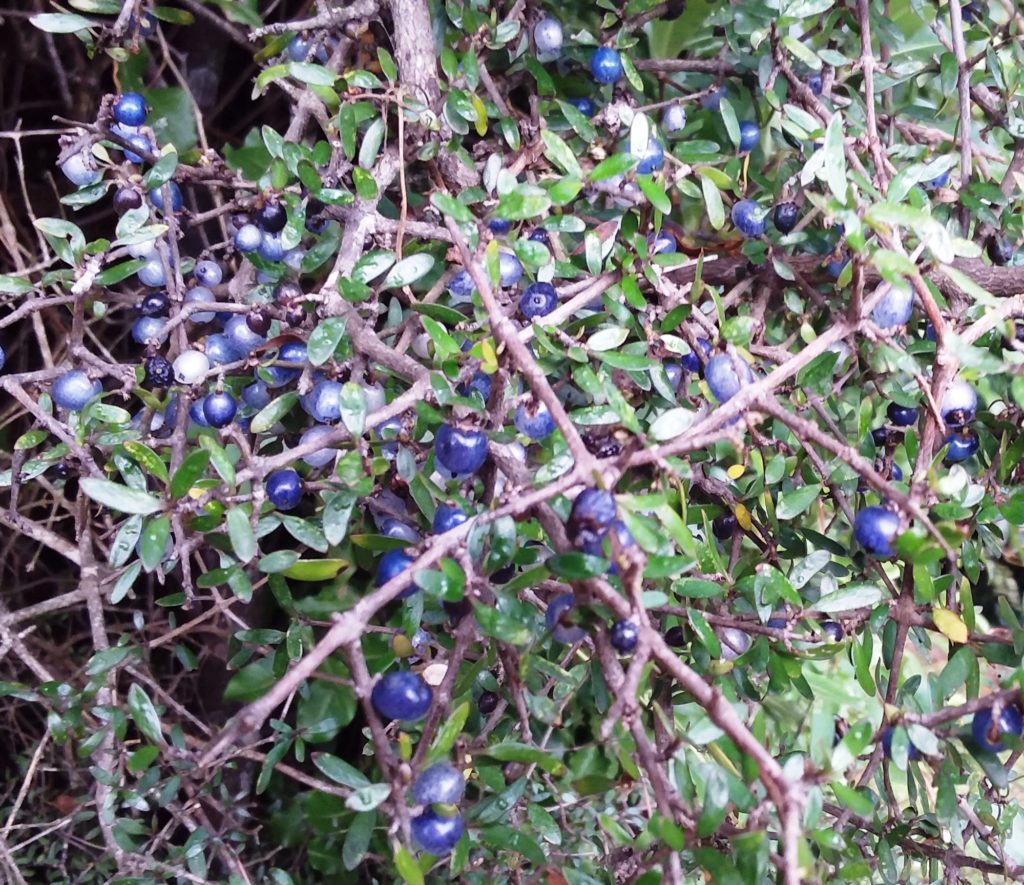
To create a stunning effect, team Coprosma propinqua with Coprosma dumosa. The latter’s bright red currant-like berries are miniature stop lights, and like blue-berried cousin’s fruit, they simply dominate the divaricating bush in autumn. C. dumosa is common in high rainfall areas, which is your clue to water it well over the summer, and mulch around its base to lock in moisture.
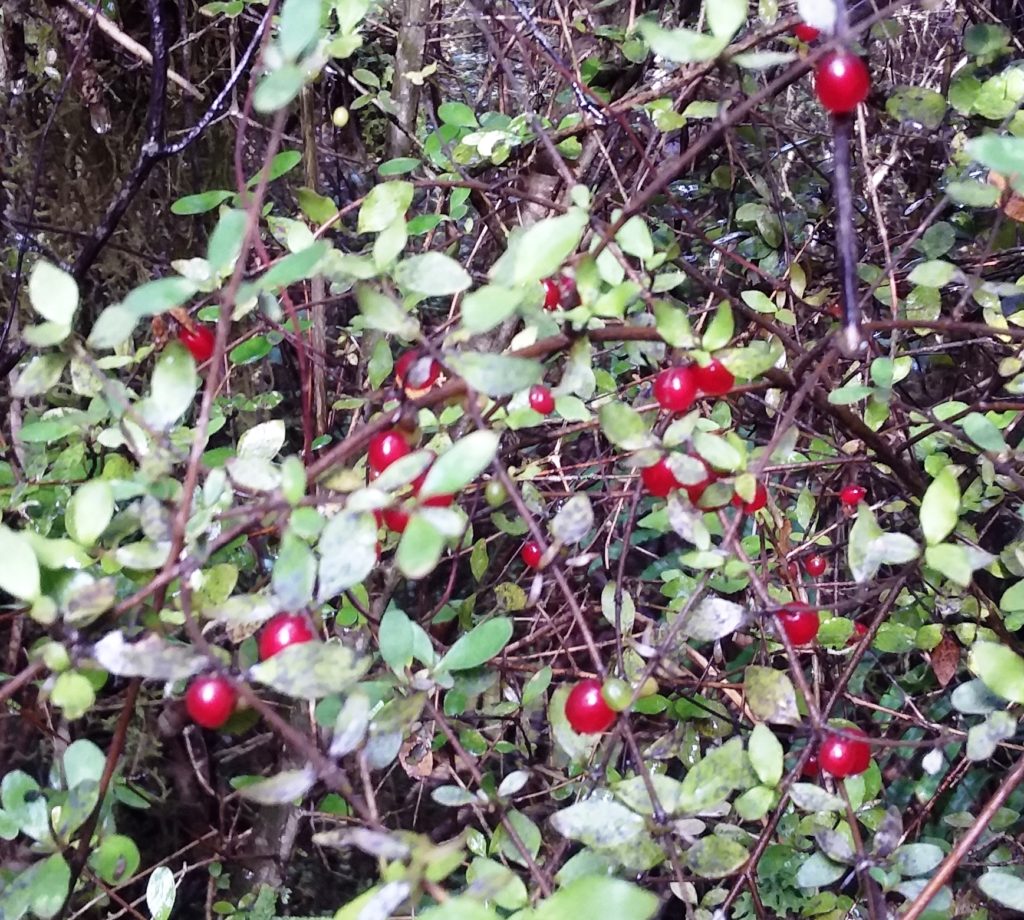
Green mistletoe (Ileostylus micranthus) is known to the Maori as ‘pikirangi’, and can be found scrambling over other plants, even those that are low growing. Its inconspicuous summer flowers are followed in autumn by popping yellow berries that wink out from a glossy lime green backdrop of foliage.
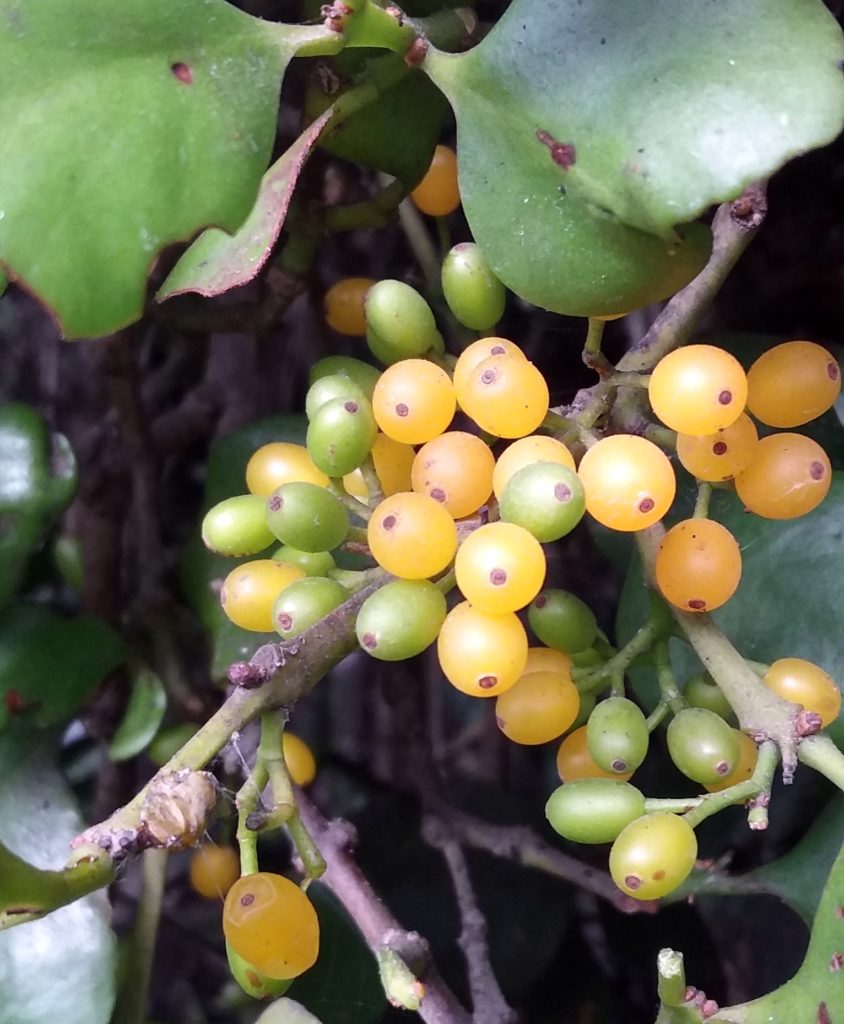
Solanum laciniatum (porporo to the Maori) is often thought of as a weed, and is unpopular because its berries are toxic. Instead of taking this one into your garden, enjoy it in the wild for its vivid purple flowers in summer and large yellow-orange berries in autumn. If you spot it growing wild on the roadside, cut branches of mature berries, and team them in a vase with spent ebony flax flowers and the deep purple-black berries of Pseudopanax Arboreus (five finger).
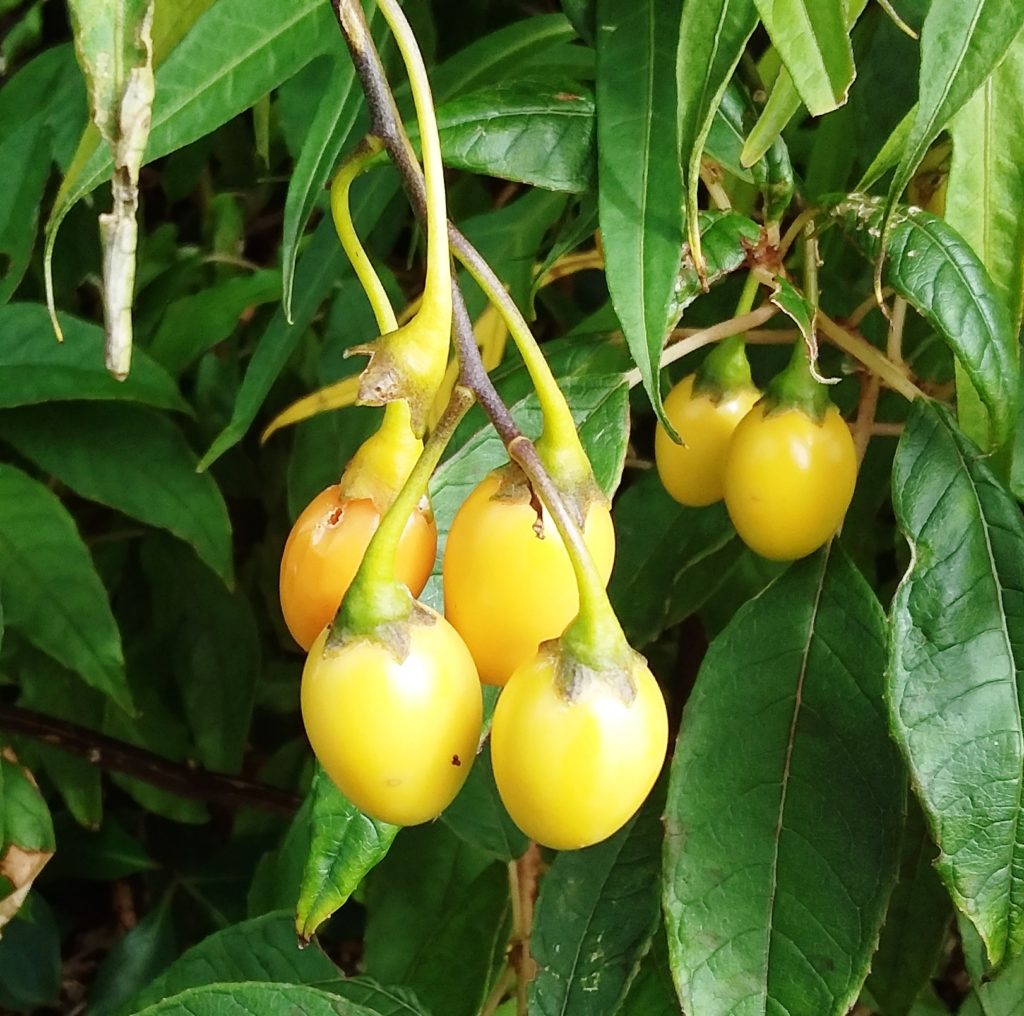
Best for the birds
Whenever you choose berries to colour your autumn garden, you’re benefitting our native birds as well. Cleverly adapted to take advantage of native plants in all seasons, our bellbirds, waxeyes, kaka, saddlebacks, and tui all dine off the nectar of flowers as well as the berries that come later. Berries benefit us all!









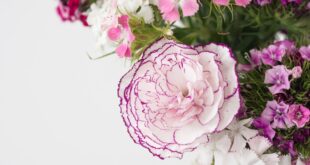
Join the Discussion
Type out your comment here:
You must be logged in to post a comment.